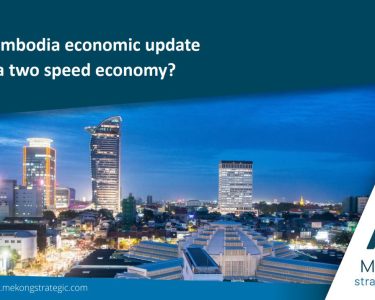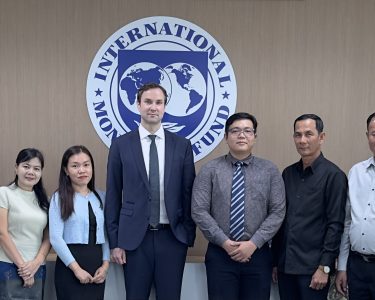Cambodia Investment Review
Moody’s Ratings has changed Cambodia’s sovereign credit outlook to negative from stable, while affirming its long-term issuer rating at B2, citing heightened external pressures linked to global trade uncertainties and domestic economic challenges.
The revised outlook reflects rising downside risks to Cambodia’s growth trajectory, particularly given the Kingdom’s strong exposure to U.S. trade policies. Cambodia’s exports to the United States accounted for nearly 40% of total exports—or approximately 20% of GDP—in 2024, one of the highest ratios across Asia-Pacific economies.
Moody’s warned that if U.S. tariffs, currently around 10%, were to increase substantially, or if global growth slows more sharply, Cambodia could face significant near- and medium-term headwinds. The agency estimates that potential tariff hikes could shave almost two percentage points off Cambodia’s 2025 GDP growth, lowering forecasts from 5.3%.
At the same time, Moody’s affirmed Cambodia’s B2 rating, balancing vulnerabilities against key strengths, including a manageable government debt burden and resilient economic potential. Cambodia’s public debt remained low at under 30% of GDP in 2024, supported by a reliance on concessional financing from multilateral and bilateral lenders, which buffers the country against volatile debt costs.
Trade Pressures and Real Estate Weigh on Outlook
The negative outlook primarily stems from external risks. The Kingdom’s heavy reliance on garment and footwear exports—sectors particularly sensitive to price changes—makes it vulnerable to any escalation in U.S. tariffs. Moreover, as U.S.-China tensions persist, Cambodia’s role as a transshipment hub for Chinese goods may be scrutinized, potentially affecting foreign direct investment (FDI) inflows and export volumes.
Internally, Cambodia is grappling with a protracted downturn in its real estate and construction sectors, traditionally significant contributors to domestic consumption and investment. Moody’s noted that the real estate slowdown could heighten financial sector vulnerabilities and weigh further on private sector demand.
Despite these risks, Cambodia’s foreign exchange reserves remain robust, standing at $18.3 billion as of February 2025—equivalent to around 7.5 months of import coverage. These buffers provide resilience against potential external shocks.
Long-Term Fundamentals Remain Supportive
Moody’s emphasized that Cambodia’s fundamental credit strengths, particularly its low debt-to-GDP ratio and strong debt affordability, continue to underpin the country’s rating. The Kingdom’s debt is largely concessional, insulating it from abrupt market-driven cost spikes.
Additionally, while global uncertainties pose near-term risks, Cambodia’s growth potential remains intact, supported by demographic advantages, ongoing diversification efforts, and a gradual recovery in tourism. Although tourism receipts have yet to fully rebound to pre-pandemic levels, they are steadily improving, with growing arrivals from neighboring countries partially offsetting the decline in Chinese visitors.
ESG and Governance Factors
Moody’s also flagged environmental, social, and governance (ESG) challenges as important considerations in its rating. Cambodia faces exposure to environmental risks such as droughts and floods, while social risks remain elevated due to low income levels and limited access to basic services. Governance challenges, including transparency and institutional strength, also weigh on the country’s credit profile.
Path Ahead: Key Triggers for Future Rating Actions
An upgrade to Cambodia’s rating in the near term is considered unlikely. However, Moody’s noted that a stabilization of U.S. trade policies and a firmer global growth environment could support a revision of the outlook back to stable.
Conversely, further escalation of trade barriers or sustained weakness in the real estate sector, leading to broader macroeconomic or financial instability, could prompt a downgrade. A sharp erosion in foreign investment or significant stress within the banking system would also increase risks to Cambodia’s sovereign credit profile.





